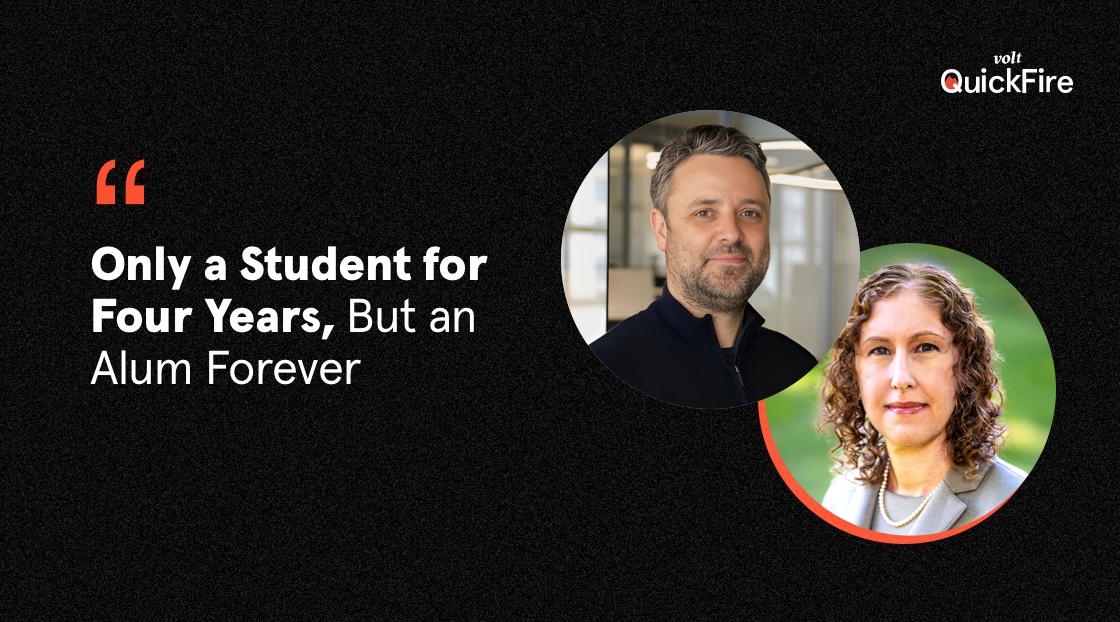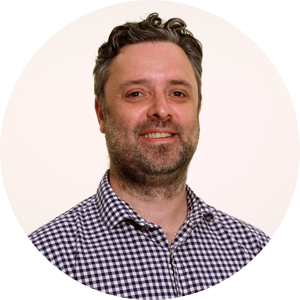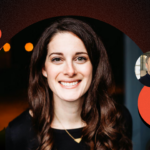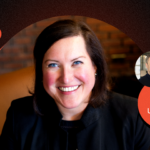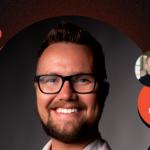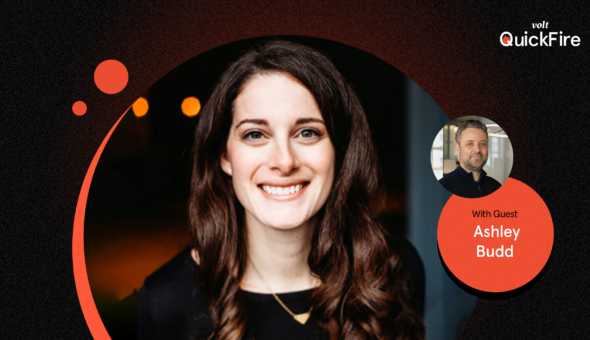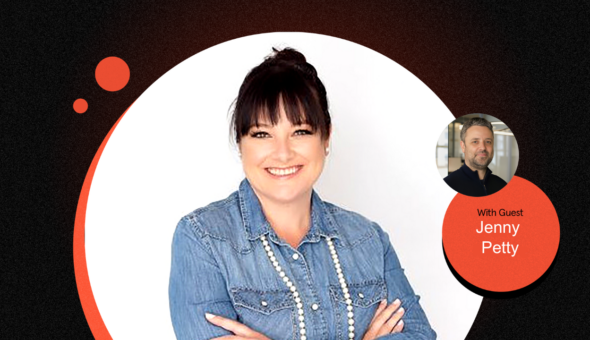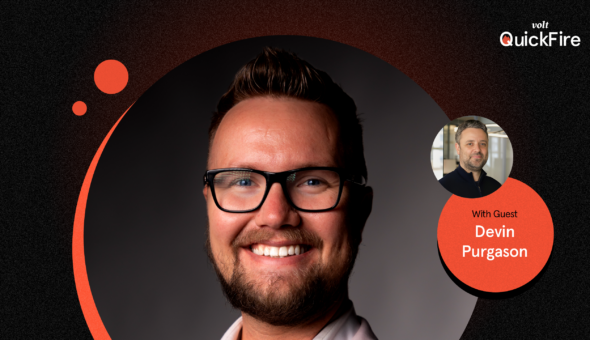Kevin Renton:
Hi there. My name’s Kevin and welcome to QuickFire from Volt. This is where we put higher education marketers on the hot seat and fire them 20 rapid questions with a goal of understanding what makes them tick, what makes them successful, and what their goals are for the future. So in the crossfire today, we have Samara Sit, chief communications officer at Bryn Mawr College. Welcome, Samara.
Samara Sit:
Hello. Thank you for having me.
Kevin Renton:
Not at all. Our first softball, give us your elevator pitch. Who are you, and what do you do at Bryn Mawr?
Samara Sit:
Well, as you said, I’m chief communications officer here. My role is to elevate the reputation of the institution to our key audiences. I direct our office of college communications, which is responsible for telling the story of the college and also thinking about our various positionings for external audiences as well.
Kevin Renton:
I wanted to work in higher education because…
Samara Sit:
Oh, well, it’s been about 14 years since I crossed over into higher education communications and marketing. I came from public television in television news for the NewsHour, with Jim Lehrer, and it kind of felt like a second home because what I was doing there was telling stories to an international audience through public TV on PBS, and it was a form of education telling interesting stories to people who are curious about the world. And here I am on a college campus, this is my third, working with people who are curious about the world, and it really feels like an opportunity for what I do to elevate all of the great stories and let people know about all the great research that’s happening.
Kevin Renton:
The marketing tool I can’t live without is?
Samara Sit:
Productivity tools are some of my favorite things in the world, so very connected to Trello. And marketing wise, we use Loomly for our social media to stay organized and to keep track of all of our approvals for things that need to go out. And also, a really big fan of MailChimp for our email marketing and our digital newsletters.
Kevin Renton:
In the next five years, I’d like to…
Samara Sit:
Well, I feel like we’ve been hearing about this for a little while now, but I think within the next five or 10 years, voice search is really going to become much more prominent than text search, which we have been stuck in for a while. And we’re starting to see a little bit of picture search where you have apps that you can point at a plant and it will tell you what it is and what’s wrong with it. We haven’t yet totally perfected that idea, but I do think, as we are building up on our web presence, I’m trying to think very critically about the way that we’re using metadata and header information and keyword information because eventually, I don’t think it’ll be Siri and I don’t think it’ll be Alexa, but some app we’ve never heard of will be the future choice of prospective students who are just going to verbally ask, “What’s the best selective liberal arts institution for me because I’m interested in X.” And we want to make sure that our institution is being served up to the right students who are a good fit for our institutions.
Kevin Renton:
My biggest professional mistake was?
Samara Sit:
Many years ago when I was a producer reporter at the News Hour with Jim Lehrer, we had an interview scheduled for the top of the broadcast. And normally, the stories that I would produce were a little bit lower in the rundown, so I gave the wrong time to a guest who had to come over from Washington D.C. into our studios in Arlington, Virginia. And as time ticked by and we realized the guest was not in makeup, there was a big concern that we’d had a hole at the beginning of the broadcast, but he was early as it turned out, and all was well.
We got him rushed through makeup and onto the set for the 6:02 start, and nobody was the wiser except for me and a couple of people on the backside. But it was a good lesson for me in really making sure that you’re not just using muscle memory when you’re going through your work. Even if you’re doing something the same way every day, you still have to pay attention to those details because sometimes they do change, and it can mean the difference between a big hole at the start of the broadcast or a really good discussion.
Kevin Renton:
When I’m not working, I’m…
Samara Sit:
Mostly working out. I get up very early every morning to have a daily workout before I have breakfast, or in my home gym or I’m outside on my mountain bike on the weekends, getting some fresh air or hiking. So usually, being active is my way to counterbalance the work stress.
Kevin Renton:
The secret to students succeeding at my school is…
Samara Sit:
I think for our students it’s really being able to be surrounded by like-minded individuals but also individuals who have different opinions and being able to learn from others and respect others is something that our students really excel at. And I think the school is a place that attracts people who are curious about the world and can really learn a lot by keeping an open heart and an open mind. And those are the folks who were really are successful here.
Kevin Renton:
I admire the marketing work at…
Samara Sit:
Well on the higher ed space, I’ve been extremely impressed with the branding that Simpson Scarborough did at University of Montana. I would wear that t-shirt, and I’ve never been to Montana before. But from the non-higher ed space where I try to draw a lot of inspiration, I’ve been particularly interested in a lot of the work that Penzeys Spices has done, which is an odd place perhaps to draw inspiration, but it’s a national company that has stores and also online where you can buy spices to cook whatever it is you’d like to cook at home and are very high quality and very good.
But what they have done over the last years, it has evolved, is take a bit of a political stance. I think that can be very tricky for institutions. We’re still navigating that space in higher education. But what I admire about it is, whether it was in a overt marketing ploy or just how the owner of the company feels about any particular issue, it makes you want to gravitate toward the company because it feels very authentic. And it makes me realize that, as much as I want to tell an institutional story with an institutional voice, and sometimes there’s a place for that, a lot of times people are going to gravitate more toward the authentic narrative from the first person and letting people tell their own story in a way that is not filtered, also, has a really good place in higher education.
Kevin Renton:
The biggest challenge facing higher education marketers are…
Samara Sit:
One is just finding time in the day. What I have found over the last 10 years or so as social media channels proliferate as we just get asked to do a lot more with a lot less, it can just feel like it is hard to let go of legacy functions without really thinking through the strategy and the efficacy of what we’re trying to accomplish. And so knowing really why we are doing the things that we are doing, and what goal we’re trying to achieve with them, is really critical and something I’ve worked on at all three of my institutions of higher education because we can’t add more hours in the day and we do need a work-life balance. And I do try to make sure that my teams do that.
Kevin Renton:
My favorite social media channel is, and why?
Samara Sit:
I think what I gravitate toward most in my personal time is Instagram. I have more followers or friends on Facebook, but I find more entertainment through Instagram. And it is the one place where I’m getting served content from people I don’t already know of the channels that I am on. And I appreciate learning new perspectives, or just seeing a funny cat video or dog video is like the perfect end to a long day.
Kevin Renton:
My biggest professional achievement is…
Samara Sit:
In my last role, I was at a different institution and I had the chance to launch their first comprehensive brand strategy and positioning creative work. And I saw from the ground up, while they had an excellent reputation, giving clarity to the purpose behind why an institution exists and giving a magnet for the people who work at an institution to gravitate towards something specific and be able to talk about the institution in specific terms made a huge difference. I had people who had worked there 25 years tell me they had never had such pride as when we were able to sort of release this new positioning. And that meant a lot to me, and it showed in our application rates going up and our donations going up and just generally internally, people feeling like we were a lot more aligned. And I’m hoping to do that work here as well.
Kevin Renton:
What’s working in higher ed right now?
Samara Sit:
I think institutions are very seriously listening to the general populace. Some of the polling that’s coming out, in terms of needing to understand the return on investment for higher education. I think for a long time, higher ed has kind of rested on the laurels a little bit of you have to have a college education and you just come and you get one and you’re going to be fine. And I think people are looking for a little bit better explanation. And I think institutions are doing a very good job now of articulating that, not only for prospective students but also their parents or guardians, to really understand what’s going to happen in that person’s life if they do choose the institution. And how is this going to make a real difference long-term because you’re only a student for four years, but you’re an alum forever. And so looking at the power of alum networks and really thinking more holistically about the student experience beyond just getting the first job, I think is a real sea change in the way we talk about the experience of higher education. I think it’s working very well.
Kevin Renton:
What’s not working in higher ed right now?
Samara Sit:
Well, cost, is similarly, the flip side of talking about the return on investment is. For a lot of reasons, cost has really risen a lot. Certainly, since I was an undergraduate. And again, because people are looking for that return, it can feel like a little bit of a competition to have really great opportunities for students in terms of facilities or activities and things that cost a lot of money. And so you kind of have this constant raising of costs that it is, for some institutions, a great deal of money. And a lot of middle-class folks are caught in the middle of thinking on paper that they can pay more than they really were planning to pay for college. And that makes for some students a very difficult decision.
Kevin Renton:
The future of higher education will be…
Samara Sit:
I like the trend of thinking about higher education beyond the four-year degree concept. I think there’s a reason why this education has been born out of needing to have a certain amount of credits and needing to master a certain amount of things before you can get a baccalaureate degree in the United States. And I think there’s a real argument for the power of liberal arts and the critical thinking that comes along with a degree like that. But I also recognize that there are a lot of people who just flat out cannot afford four years of college or, for various and sundry personal reasons, can’t take four years out of their life to go to college, at least not all at the same time.
And so having the flexibility of part-time baccalaureate programs or shorter programs. I saw some new ones out west, the three-year opportunities. I don’t want the quality of what the students are walking away with to be diminished. So there would need to be kind of a check on exactly what the students are going to be getting for a shorter degree. But the idea of building upon the opportunity not only for first undergrads but also people looking to broaden their skills as older adults. Maybe there’s an opportunity to get a second degree with just a year or two of additional studies that build on some of the requirements maybe that you had when you were an undergrad. So thinking creatively about the way people’s lives work, I think will benefit and has benefited higher education greatly.
Kevin Renton:
A key to my success has been…
Samara Sit:
Really being curious about the world and surrounding myself with curious people on the staffs that I’ve managed has mattered a great deal. I learn a lot as a higher-ed communicator just by talking to people and asking a lot of questions. And that is partially why I value being on campus full time, is the opportunity to meet people at meetings and then maybe walk them back to their office or walk them across the green here and ask them, “So you were talking about X, tell me more about that, or what new programs are you starting this fall?” And that’s how we get really good story leads and really good opportunities to tell the story of Bryn Mawr College in new ways.
Kevin Renton:
One thing I’ve learned about managing teams is…
Samara Sit:
Well, this is a lesson I learned at some great training I had at my prior job, which is that staff are not really here to be vessels for our goals. I think earlier in my career, I felt like I was here to get things done, and my job was to kind of manage the people to get things done. But in reality, the people who report to us as team leaders have their own goals, have their own desires, have their own personal lives, have their own challenges. And if we don’t get to know them enough to understand what those are, we can’t work with them when they get stuck or cheer them up when they’re not feeling great about something that didn’t go well.
So there’s a personal connection, but also just recognizing that there are some weeks that are just going to be tough for people, particularly people who are working parents or people who are taking care of elder parents of their own. And I feel like it makes me a better manager to have that understanding and to co-create goals and co-create assignments as opposed to having that sort of top-down level management of yesteryear.
Kevin Renton:
I totally agree with you, and obviously when we are hiring for the agency, a lot of the time is actually getting people’s personal goals to align with the agency’s goals because that’s when you get that synergy or that’s when you get that direction.
When you recruit for people then, is there a way that you unearth these personal goals?
Samara Sit:
I think that there’s a lot of other questions that are more top of mind when interviewing usually, but I think it’s more just being very transparent about my own values and the values that I hold dear for the team and the norms that we’ve established on the team. And recently, my team interviewed a new possible person. I was pleased to hear that they were expressing the goals without me even in the room. And so they’re living them and they’re demonstrating to potential colleagues, if you’re going to work here, these are the things that you need to know in terms of how we all operate. And if that sounds good to you, then you’re going to be a really good fit here. So it’s kind of happening organically.
Kevin Renton:
The hardest part of my job is…
Samara Sit:
I think the hardest part is really balancing the strategic with the tactical and the legacy projects and legacy functions with a need to sort of broaden out in new directions. There’s kind of an ebb and flow in higher education. It’s cyclical. There are times of the year that are always going to be busier than others. But I feel often personally challenged by just wanting to get to some of those higher level strategic conversations or plans, but needing to respond to a suite of emails that have come in or having a day long of back-to-back meetings and kind of separating those things out.
So, I’ve begun to block my calendar and have work time, which sounds very basic, but if I try to do it organically and catch up in between five meetings, I’m usually just mentally exhausted and can’t really think that much about the future. So, I block off at least a half a day or more a week where I have no meetings. Where I’m in my office and I can just do focus time. And that has made a big difference.
Kevin Renton:
Samara Sit:
I love my job because telling the story of a great storied institution, I think, makes a big difference to the community. Not only internally, to give people pride and to create connections between employees, so in this case, faculty, staff, but also for students to feel like they’re part of something bigger than themselves. And also the outside world, who depends on the research and the creative work happening in higher education for many things that they might not even be aware of. Solutions to major authority problems and questions, or even just approaches and ways to think about the world. That is still a value in our culture, and I’m proud to be able to tell those stories and shine light on things that without my team, nobody would know about.
Kevin Renton:
Fantastic. Thanks for sharing your story, Samara. Thanks for spending time with Volt and QuickFire. We look forward to the stories that you create about Bryn Mawr College in the coming years.
Samara Sit:
Thank you, Kevin. Great to be here.
